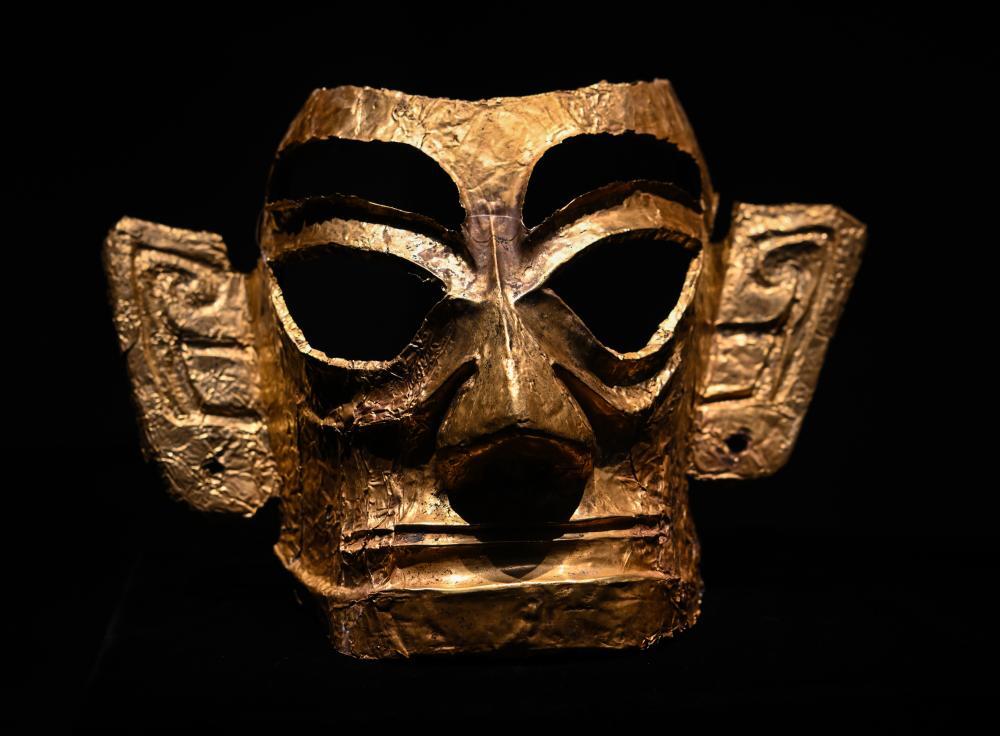Introduction
In the fertile plains of Guanghan, Sichuan, a secret dormant for three millennia is stirring. Sanxingdui, a name that evokes cosmic mystery, is home to one of the most significant archaeological finds of the 20th century. Imagine otherworldly bronze masks with hypnotic eyes, a solid gold scepter of immense power, and towering sacred trees that seem to connect heaven and earth. The treasures unearthed here are rewriting the history of Chinese civilization, challenging everything we thought we knew.
Background: The Lost Kingdom of Shu
From Legend to History
For centuries, the ancient kingdom of Shu was a phantom, a land of myth mentioned only in passing in texts like the Chronicles of Huayang. The discovery of Sanxingdui provided astonishing proof of its existence, revealing it to be a major hub of a sophisticated and previously unknown Bronze Age culture. Archaeologists now believe this site was the capital of the Shu kingdom, a powerhouse that flourished independently of the well-known Yellow River civilizations.
The Sudden Disappearance
The most profound mystery is the civilization’s abrupt end around 1,200 BC. There are no signs of invasion, nor clear evidence of a definitive natural disaster. The entire culture seems to have vanished, its magnificent artifacts carefully broken or burned and then deliberately buried in two great sacrificial pits. It was not a chaotic end, but a ritualistic farewell. Why they did this, and where the people of Sanxingdui went, remains one of history’s greatest unsolved puzzles.
Enigmas in Bronze and Gold: The Key Discoveries
The Great Bronze Masks
The most iconic artifacts of Sanxingdui are its magnificent bronze masks. These are not portraits, but representations of gods or spirits. The largest of these, the famous “Mask with Protruding Pupils,” measures an astounding 1.38 meters wide. Other bronze heads stand up to 1.38 meters tall (including the neck), featuring exaggerated, alien-like features—vast ears, sharp noses, and haunting, oversized eyes that seem to gaze into another dimension.
The Golden Staff
At 1.43 meters long and wrapped in pure gold foil, this staff is a singular object in Chinese archaeology. It is not a weapon, but a symbol of supreme power, likely held by the kingdom’s leader. It is intricately inscribed with designs of a human head wearing a crown, along with fish and birds pierced by an arrow—a code that likely represents the king’s authority over the natural and spiritual worlds.
The Bronze Sacred Tree
Standing at a breathtaking 3.96 meters, the restored No. 1 Sacred Tree is the museum’s centerpiece. It is a “cosmic tree,” a conduit between the mortal world and the heavens. Nine birds, representing the suns of ancient mythology, perch on its branches. This masterpiece demonstrates not only incredible artistic vision but also a profound spiritual understanding of the universe.
Visitor’s Guide: Planning Your Journey to Sanxingdui
Sanxingdui Museum: The Essentials
- Address: 133 Xi’an Road, Guanghan City, Sichuan Province, China.
- Opening Hours: The museum is open year-round.
- Museum Halls: 08:30 – 18:00 (Last entry at 17:00).
- Park & Relic Areas: 08:30 – 17:00.
- Tickets:
- Adult: 72 RMB
- Student/Youth: 36 RMB
- Booking is Essential: Due to high demand, you must book tickets in advance online via the official “三星堆博物馆” (Sanxingdui Museum) WeChat account. Tickets are often sold out days or weeks ahead.
Getting There
- From Chengdu by Train (Recommended): Take a high-speed train from Chengdu East Railway Station to Guanghan North (广汉北) Station. The journey is about 30 minutes. From there, take a taxi (15-20 minutes) or a designated tourist bus to the museum.
- By Tourist Bus: Direct shuttle buses run from several locations in downtown Chengdu (such as Chunxi Road and Tianfu Square) straight to the museum. This is a very convenient option.
- By Car: Driving from Chengdu takes approximately 1 hour via the G5 Cheng-Mian Expressway.
Best Time to Visit
- Spring (March-May) & Autumn (September-November): The weather is pleasant and crowds are more manageable than during peak holidays.
- Avoid: Chinese national holidays (especially National Day “Golden Week” in October and Spring Festival) and summer school holidays (July-August), when the museum is extremely crowded.
Visitor Tips
Comfort is Key: Wear comfortable walking shoes.
Hire a Guide: The cultural significance of the artifacts is immense. Renting an audio guide or hiring a human guide is highly recommended to fully appreciate the exhibits.
Allow Enough Time: The new museum is vast. Plan for at least 3-4 hours to explore it properly.
Photography: Photography without flash is permitted for most exhibits. Pay attention to signage.
